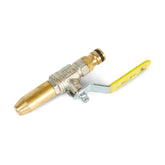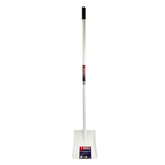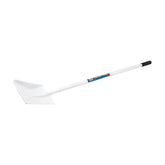How To Cut Bricks | A Guide
Introduction
Cutting bricks is an essential part of any brickwork job and as such, needs to be given the proper attention it deserves. Knowing how to cut a brick effectively can save you a lot of time and stress.
This guide will help you to navigate this essential skill and discuss the various ways you can go about getting this task done right.
There are two main ways of cutting a brick: By hand, or with a machine.
Brick Cutting by Hand
The first thing you’ll need to do is to decide on the size you need to cut your brick. Do you need to cut it down the middle, along the length, or across the width?
Once you know what size you need to cut the brick, it’s time to mark it out. Most times a permanent marker pen is good for this. You may choose a carpenter’s pencil, but remember you need to be able to see the line while you’re cutting it.
Firstly, your brick will need to be marked clearly at the size you need. Then the brick will need to be scored all around to weaken the point to be cut.
Using a hammer and chisel, or bolster, the basic technique is alternating sides. You’ll want to start at one end of your cut line and hit the chisel with a reasonable amount of force. You don’t want to try and break the brick with one hit, but you still need to impact it.
Work your way along from one end to the other, turn the brick over and go back again and it should break clean. It might take you one or two bricks to get the right force on your hammer hits, but once you know, you know.

Using a Bricksaw
If you’re using a bricksaw or other cutting machine, check to make sure the blade is going to be deep enough to go through the whole brick at once, or will you need to roll the brick over to get all the way through? Noting that in doing that, you’ll need to line up the cuts extremely well or you’ll end up with an uneven cut line that may prove annoying.
Mark out the brick to the size you need and be mindful of cutting blade thicknesses. The cutting blade of a bricksaw will take a few millimetres off as well, which may be an issue depending on the application. For example, brick paving can have some sections which may be quite unforgiving when it comes to tolerances.
Remember that when using a machine with water running over it, your marked line may get difficult to see.
Put the brick into the carriage and line up the blade with your cut line by slowly moving the brick toward the blade without touching blade. When ready, make sure your fingers are out of the way and push the brick steadily through the blade.
Remove the two parts of the brick from the carriage and don’t throw the wrong one away!

Tools & Equipment for The Job
This really all depends on the application and whether you’re cutting an existing brick wall, or you’re cutting single bricks to fit into a specific spot. One of the biggest things to consider, no, THE biggest thing to consider is safety. There’s no point doing things the easiest way you can think of and then ending up hurt. See, you can fit a circular saw with a masonry blade (but you also might lose a finger or three). On top of that, it also creates a lot of dust.
An angle grinder fitted with a masonry wheel can help you get into much tighter angles if that’s a requirement. Some of them can also have a vacuum fitted to them. The problem there is then you have a vacuum hose to drag around and get in the way.
If you’re cutting loose bricks and you’ve only got a couple of cuts to do, you can go with the old hammer and chisel. We’ll explain that process soon as it can be a handy skill to have, and it is an option. However, if you’re the serious brickie, or well-seasoned DIYer with the necessary skills, then you would want to consider a machine that makes cutting bricks look like child’s play (seriously though, do not let your kids play with these things!).
The BT Bricksaw has a smooth running 1800 watt electric motor and is definitely one of the most preferred choices for serious brick cutting. It suits a 14” blade and can cut up to 125mm deep and 500mm long. With its industrial extra heavy-duty carriage and head bearings it’ll cut through the job in no time at all. Now, if you’re the one that always likes to upsize your meal, what you’re looking for is the BT Engineering Bricksaw with its custom designed 6.5HP Honda GX200 petrol motor (yeah, it’s as good as it sounds). These are made right here in Australia and has an added foot control for hands-free operation, so you can concentrate on the cut.

Remember, what matters is getting this done safely. These machines have all the right guards in all the right places that help you get the job done and won’t get in your way.
Summary
If you’ve learned anything in the last few minutes we’ve been together, it’s that there’s more than one way to cut a brick. Technique Tools can offer you the quality tools for whichever way you want to go with it. From our English Brick Bolster and hammers to the power of the custom designed Honda GX200 petrol engine bricksaw, we’ll help you get it done.
It is our honest hope that you find all of this extremely useful. However, this information is designed to be used as a guide only and you do need to consider building codes, regulations, techniques, available materials, and tools. We are available to discuss your specific needs and can offer you professional advice for selecting the right tool for the job. We will always recommend the use of professional tradesmen when completing work requiring these skills.





